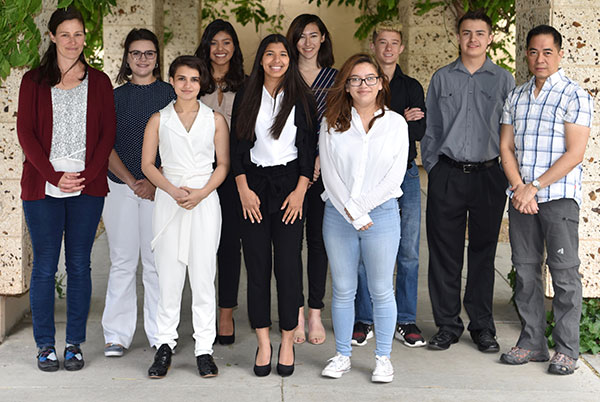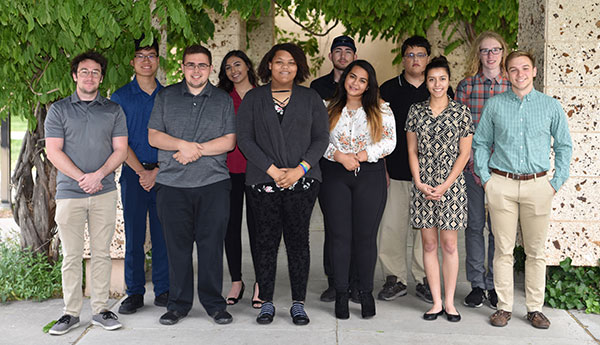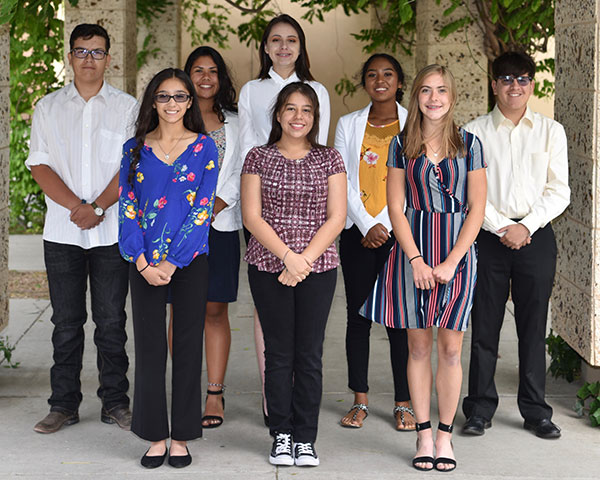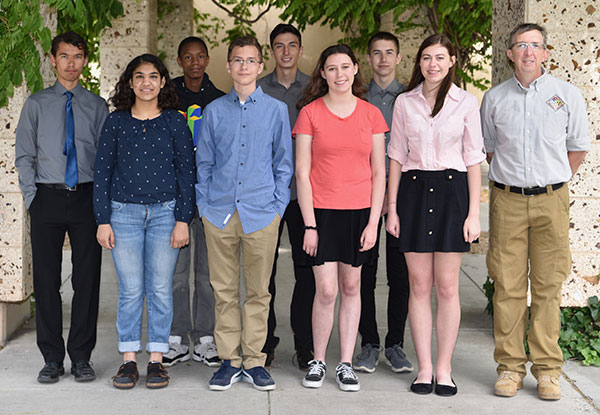- Home >
- Past Institutes >
- 2019 Joint Science and Technology Institute >
- Student Projects
Students in the 2019 Joint Science and Technology Institute will take part in research projects in a variety of scientific disciplines. Below are a couple examples of the projects that will be executed this summer.
From culture to genome: Microbiology, Molecular Biology and Bioinformatics

In this two-week session, a cohort of LANL staff will lead you through the process of culturing and characterizing a new microbe, both using traditional microbiology testing as well as analyzing sequence data. You will research closely related organisms and your final report will demonstrate how your organism differs from its close relatives. By the end of week two you will have a report nearly ready to submit for publication in the National High School Journal of Science http://nhsjs.com/.
Model Rocket Design and Telemetry

Model rocket design and telemetry have been of interest to scientists and hobbyists alike for many decades. The principles of design applied to these rockets, as well as data collection and analysis associated with them, have been crucial to space flight development and beyond. In this proposal the basic components of engineering design and data analysis are presented as key parts of a comprehensive project.
Synthetic Biology and Sustainability

Excessive human intervention has resulted in depleted resources and environment degradation resulting in detrimental effects on the health (and existence) of the various living entities in the ecosystem. During the course, I will talk about a relatively new field in science, called Synthetic Biology, which uses the components from living systems , modify them in the laboratory through a fast track “evolution” process, and use them to establish sustainable routes for commodities, fuels, environment detoxification and ultimately for tools and reagents that can be used for improving the health of humans.
The students will gain exposure in protein modeling and learn about protein structures. The students will learn how sequence determines structure and structure determines function and how we can tweak the sequence/structure for gain-in-function. Finally, the students will also get hands on experience in molecular biology and will learn transformation and protein expression using a bacterial host strain. To bring further excitement, the students will learn how to use microbes as factories for biomanufacturing, how we can ‘light’ them up, and use them to produce and ‘sense’ a molecule of interest such as an industrial precursor, which can substitute for a petroleum-based product.
STEM Applications in Emergency Response

The modern emergency response environment is challenging and dynamic, and draws from a diverse understanding of chemistry, biology, engineering, and radiation health physics. Emergency responders operate in an all hazards environment and must have excellent critical thinking skills. We frequently work as detectives trying to solve urgent problems in all areas of chemical, biological, radiological, and nuclear, and explosive (CBRNE) emergencies. We will be developing an understanding of scientific skills and techniques commonly used to address issues in many of these areas including; analytical and forensic chemistry, responding to biological and radiological threats, and ways we integrate engineering to use current tools, and develop new tools, to solve ever changing problems and threats.
